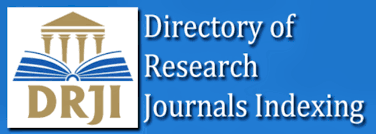Development and assessment of cost-benefit parameters of Solar Pv Powered Paddy Thresher
DOI:
https://doi.org/10.30574/gscarr.2022.10.1.0022Keywords:
Solar PV powered system, Paddy thresher, Grain output capacity, Threshing capacity, Threshing efficiencyAbstract
This paper deals with the development, technical and financial analysis of a locally available small size solar photovoltaic DC powered paddy thresher. The threshing machine was developed at Workshop Machinery and Maintenance (WMM) divisional Workshop of Bangladesh Rice Research Institute (BRRI), Gazipur, Bangladesh during 2021. Locally available materials and 1 hp motor were used to develop the technology. The thresher machine was tested to reduce dependency on diesel and electricity driven threshers in agriculture in Bangladesh. The technical and financial performance was evaluated with the average moisture content of paddy as 17.56% (w.b.). Resulted outputs of the research indicated that the machine threshing capacity was 217 kg/h with a threshing efficiency of 96.04% when threshing drum speed was 475 rpm. The thresher operational cost of per kilogram of threshed paddy for SOPT, MODT and PT were BDT 337, BDT 364 and BDT 372 respectively. However, the developed SOPT was more economically viable compared to the MODT and PT in terms of marginal benefit-cost ratio (1.91) and payback period of the thresher (1.52). The break-even use of SOPT for paddy threshing operation was estimated as 40.20 hr. As compared to MODT, SOPT paddy threshing system is eco-friendly for environment and doesn’t emit CO2 into the atmosphere. However, the SOPT was not familiar to the farmers in Bangladesh. Therefore, there is need of international, regional and national support for adoption and dissemination programs to the small farmers, an entrepreneur or a custom hire service provider in order to popularize this thresher.
Metrics
References
BBS. Statistical yearbook of Bangladesh. Bangladesh Bureau of Statistics, Ministry of Planning, Government of the People’s Republic of Bangladesh, Dhaka. 2017.
FAO. Agricultural Mechanization in Africa, Time for Action. Planning Investment for Enhanced Agricultural Productivity Report of an Expert Group Meeting. Vienna, Rome: Food and Agriculture Organization of the United Nations and United Nations Industrial Development Organization (UNIDO). 2014.
Alam M, Khan IN. Agricultural mechanization: Status, challenges and opportunities in Bangladesh. Mechanization for sustainable agricultural intensification in SAARC. Dhaka: SAARC Agriculture Centre (SAC), South Asian Association for Regional Cooperation (www.sac.org.bd). 2017; 41–50.
FAO. Food Balance Sheet for Bangladesh. Rome: Food and Agriculture Organization of the United Nations. 2017.
Bidhan Chandra Nath1*, Yo-Sang Nam2, Md. Durrul Huda1, Md. Mizanur Rahman1, Panna Ali3, Subrata Paul, Status and Constrain for Mechanization of Rice Harvesting System in Bangladesh, agricultural sciences. 2017; 8(6).
Hunt D. Farm Power and Machinery Management. -10th ed. U.S.A.: Iowa State University Press. 2001.
Grace PR. Rice-wheat system and climatic change. In Addressing Resource Conservation Issues in Rice-Wheat Systems of Sough Asia: A Resource Book, Rice-Wheat Consortium for the Indo-Gangetic Plains. Intl. Maize and Wheat Impr. Cent., New Delhi, India. 2003; 63-67.
Downloads
Published
How to Cite
Issue
Section
License

This work is licensed under a Creative Commons Attribution-NonCommercial-ShareAlike 4.0 International License.












